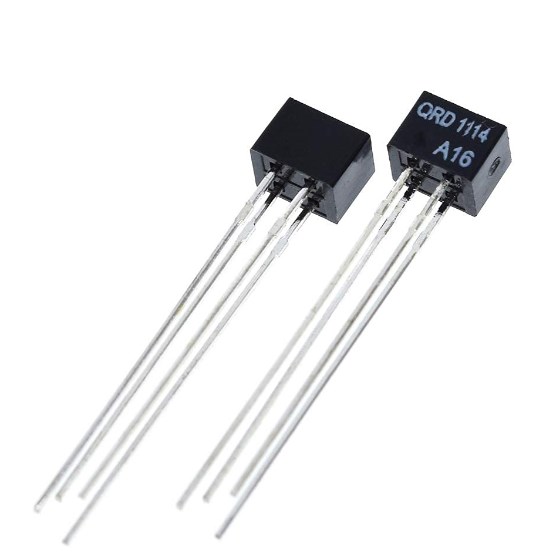In the world of electronics and automation, sensors play a vital role in capturing and interpreting real-world data. The QRD1114 sensor is a remarkable device that offers exceptional sensing capabilities, making it ideal for a wide range of applications. This comprehensive article delves into the features, benefits, working principles, and applications of the QRD1114 sensor, shedding light on its significance and potential in modern technology.
Overview of the QRD1114 Sensor

The QRD1114 sensor is an infrared (IR) reflective object sensor module that employs a combination of an infrared LED emitter and a phototransistor receiver. It operates by emitting infrared light and detecting the reflected light from nearby objects. This detection enables the sensor to accurately measure distances, detect obstacles, and identify variations in object properties such as color or surface texture.
Key Features and Benefits
- Compact Design: The QRD1114 sensor boasts a compact and highly integrated design, making it suitable for applications where space is limited. Its small form factor allows for easy integration into various electronic devices, ensuring flexibility in design and installation.
- Infrared Reflective Technology: By utilizing infrared reflective technology, the QRD1114 sensor can detect the presence or absence of objects within its sensing range. This functionality is highly useful in applications such as line-following robots, edge detection in printing and manufacturing systems, and object detection in automated machinery.
- High Sensitivity and Accuracy: The QRD1114 sensor demonstrates high sensitivity to changes in reflected light intensity. This attribute enables precise measurements and reliable detection of subtle variations in object properties. With its ability to discern even small changes in distance or object characteristics, the sensor delivers accurate and dependable results.
- Adjustable Sensing Distance: The QRD1114 sensor allows users to adjust the sensing distance according to their specific requirements. This adjustability offers flexibility in applications where object detection or proximity sensing needs to be fine-tuned.
- Low Power Consumption: The QRD1114 sensor operates efficiently, consuming minimal power while delivering excellent sensing performance. Its low power consumption makes it suitable for battery-powered devices and helps prolong the overall battery life, enhancing the longevity of portable and wireless systems.
Working Principle
The QRD1114 sensor operates based on the principle of infrared reflection. It consists of an infrared LED emitter and a phototransistor receiver placed side by side within the sensor module. The infrared LED emits a beam of infrared light toward the target surface, while the phototransistor receives and measures the intensity of the reflected infrared light.
When an object is present within the sensor’s viewing range, the infrared light emitted by the LED reflects off the object’s surface and is detected by the phototransistor. The phototransistor then generates an electrical signal proportional to the intensity of the reflected light, allowing for distance measurement or object detection.
Applications
Robotics and Automation
The QRD1114 sensor finds extensive use in robotics and automation systems. Its accurate distance measurement capabilities make it ideal for line-following robots, obstacle detection, and collision avoidance mechanisms. By integrating the QRD1114 sensor into robotic platforms, engineers can enhance their functionality, efficiency, and safety.
Industrial Systems
In industrial settings, the QRD1114 sensor plays a crucial role in various applications. It can be utilized for edge detection in printing systems, presence detection in conveyor belts, and object counting in manufacturing processes. With its high sensitivity and accuracy, the sensor contributes to improved productivity, quality control, and process optimization.
Proximity Sensing
Proximity sensing is another area where the QRD1114 sensor excels. It can be employed in automatic faucets, hand dryers, and paper towel dispensers to detect the presence of hands or objects for touchless operation. The sensor’s adjustable sensing distance allows customization according to specific proximity detection requirements.
Consumer Electronics
The QRD1114 sensor also finds applications in consumer electronics devices. It can be integrated into smartphones, tablets, and gaming consoles to enable proximity-based features like screen auto-dimming during phone calls or gesture control in gaming. Its versatility and compactness make it suitable for enhancing user experiences in various handheld electronic devices.
Conclusion
The QRD1114 sensor is a powerful and versatile component that offers precision sensing capabilities in a compact form factor. With its infrared reflective technology, high sensitivity, accuracy, adjustable sensing distance, and low power consumption, the sensor finds utility in a wide range of applications across industries.